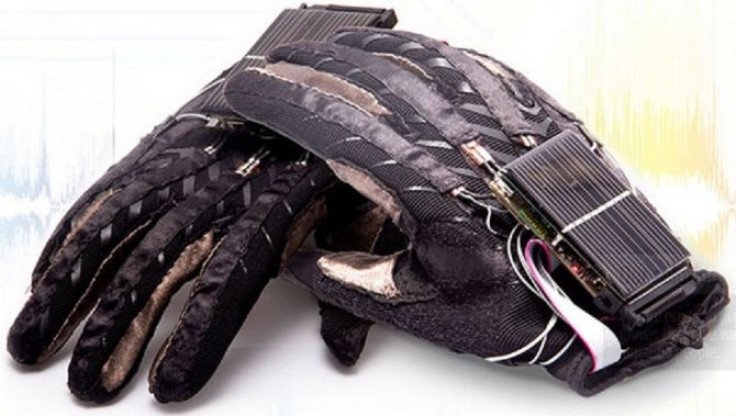Students Create Gloves That Can Convert Sign Language Movements Into Speech

A group of Ukrainian students have created a glove that can convert the movements made in sign language into speech.
The new EnableTalk gloves, presented at the finals of 2012 Microsoft’s Imagine Cup in Sydney, Australia, are fitted with 15 flex sensors, touch sensors, gyroscopes, accelerometers and a compass to define the position of the glove in space. The gloves are also fitted with some solar cells to increase battery life.
The team built a system that uses a text-to-speech engine to translate sign language into text and then into spoken words. The entire system can work over Bluetooth, allowing smartphone connection.
The researchers have built many prototypes and have tested them with people who use sign language to communicate.
Osika Maxim, one of the team members in quadSquad, the research team that made the gloves, said that the idea came from interacting with hearing-impaired athletes in school, according to TechCruch.
There are currently around 40 million deaf, mute and deaf-mute people in the world and while many of them use sign language to communicate, there are very few people who actually understand sign language.
"Enable Talk project aims at solving the problem of limited communication abilities for the disabled people who know sign language and to transform it into a form of verbal communication. The goal of our project is to create a mobile device that can continuously recognize sign language phonemes," the researchers said on their website.
TechCrunch reports that there are few existing technologies that come close to what EnableTalk does and they generally cost around $1,200, have fewer sensors, use wired connections and don't include an integrated software solution. However, researchers at EnableTalk say that the hardware for its prototype only costs somewhere around $75 for each device.
Additionally, the system can learn new gestures and users can modify the gestures that the team plans to include in its collection of standard gestures. Researchers believe that the feature will make it easier for the hearing impaired or the mute to communicate given the high degree of variation among sign languages.



























